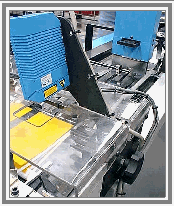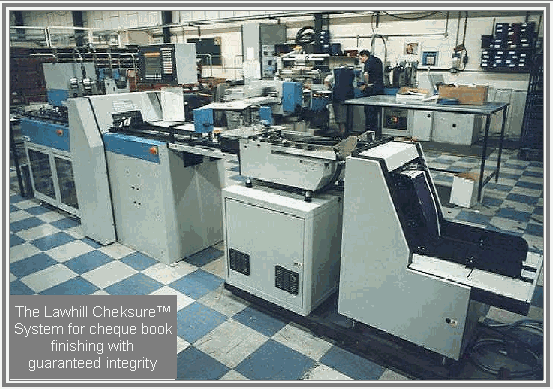|
As well as a flexible automatic loading system, the AUTOMATE™ can also provide very secure document integrity. Since sheets are drawn individually from the Suction Feeder, each can be passed under or over a reading device before entering the collating tray. The type of reading device will depend on the style of marks which can be positioned on each sheet during the printing process. The most common systems are OMR (Optical Mark Recognition), OCR (Optical Character Recognition) and conventional or two-dimensional Bar Codes. For maximum security and ease of implementation, bar code reading offers the most flexible, cost effective approach and will enable the capture of data which can be processed to verify that each sheet is printed on the correct stock, is in the correct order and is in the correct document set. Bar codes can be discretely positioned either out of view, or obviously visible for future processing as in mailing applications.
|
|





